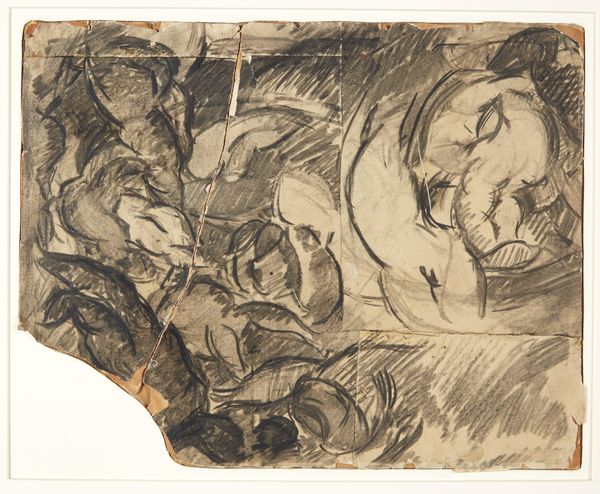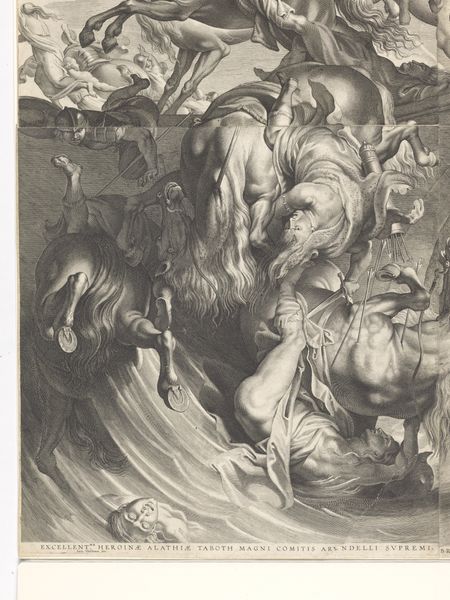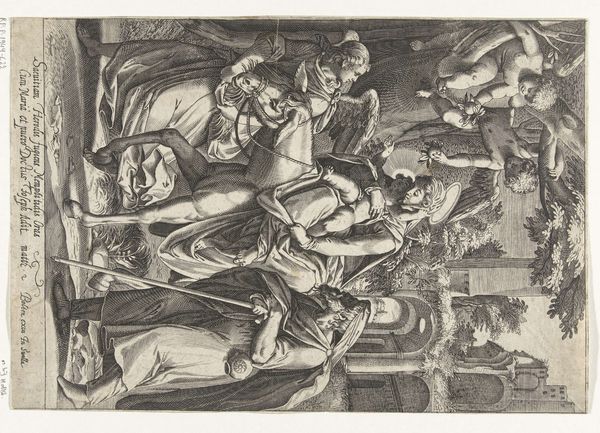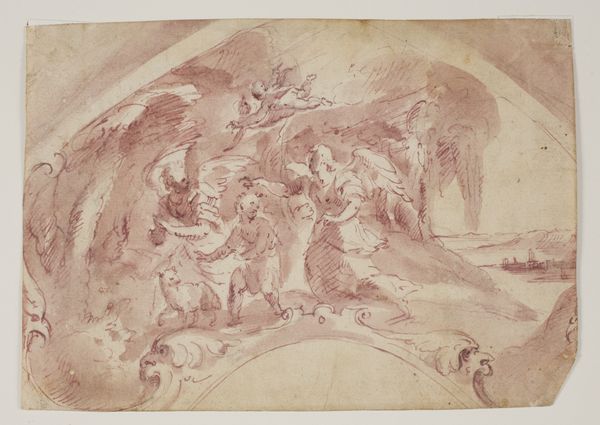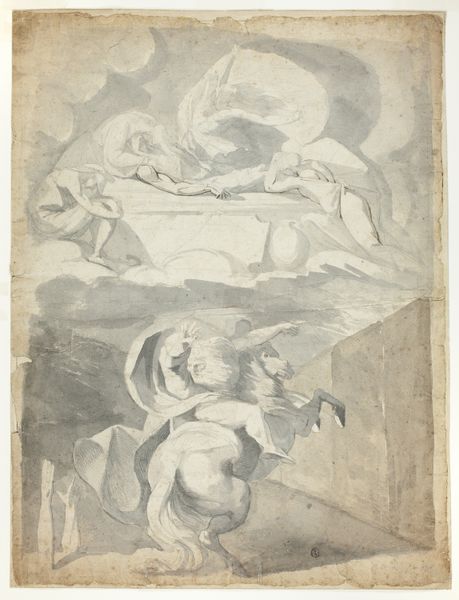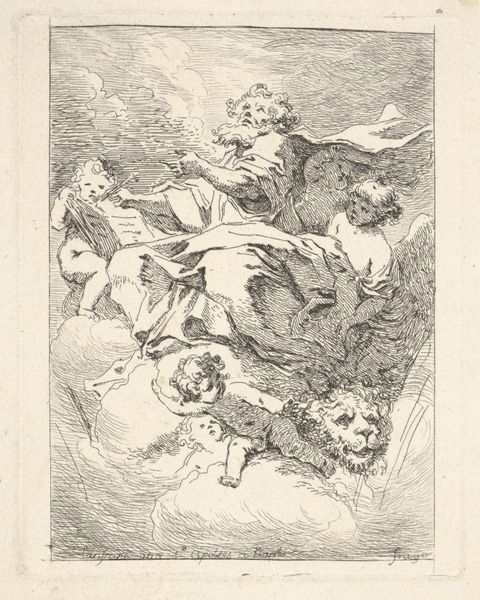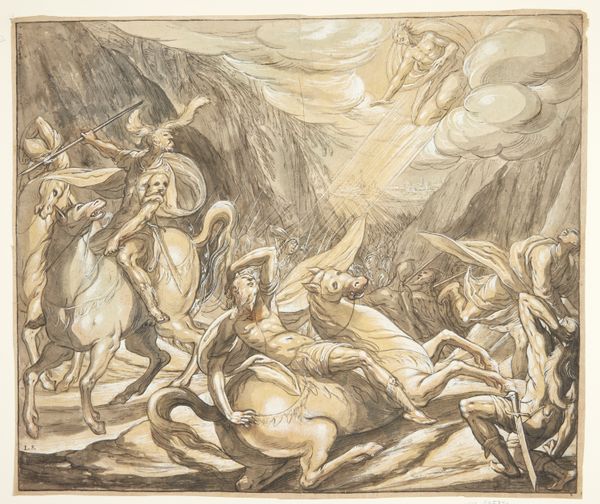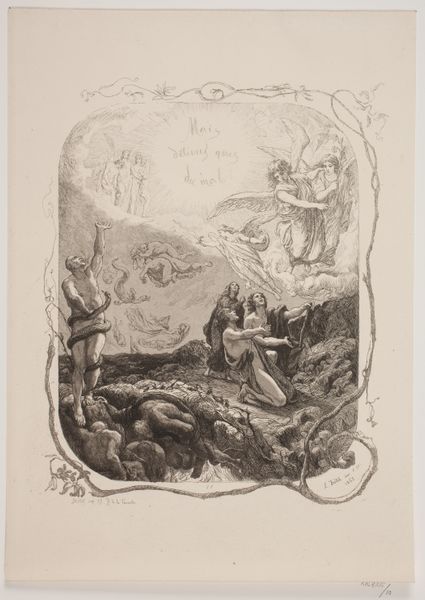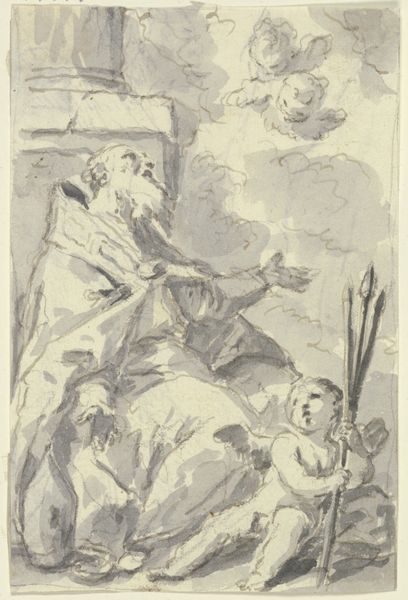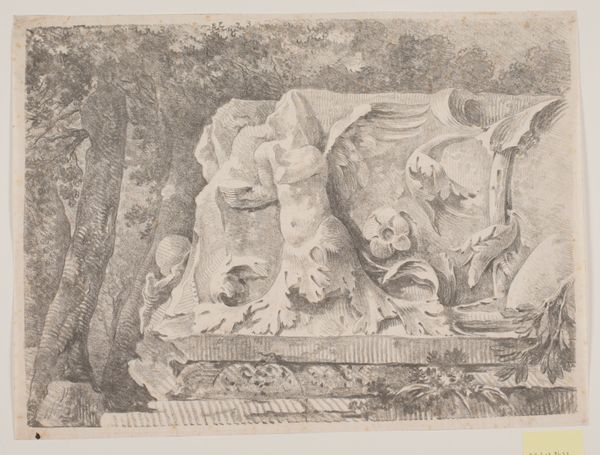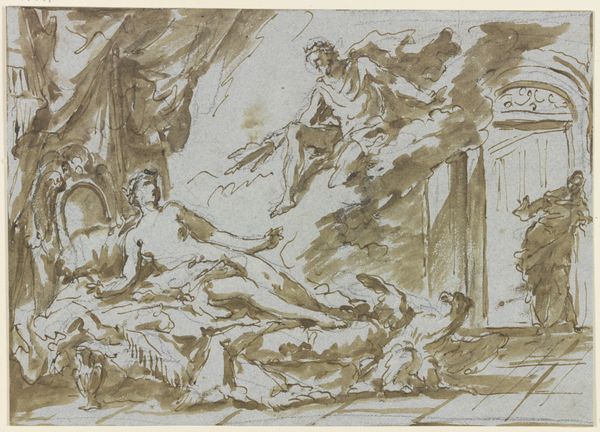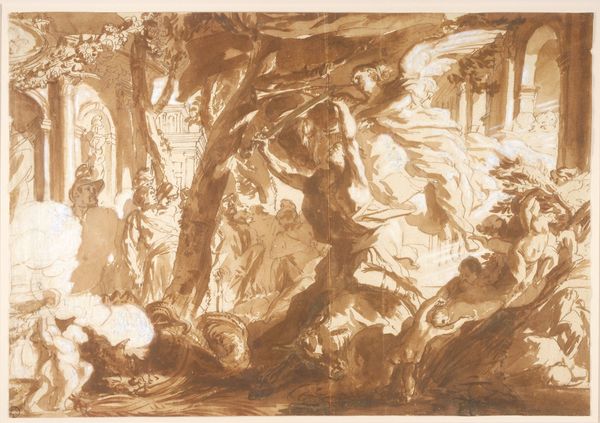
drawing, charcoal
#
drawing
#
narrative-art
#
baroque
#
charcoal drawing
#
figuration
#
pencil drawing
#
charcoal
#
history-painting
Dimensions: 171 mm (height) x 284 mm (width) (bladmaal)
Editor: So, here we have "The Holy Eugenia" by Paulus Pontius, dating sometime between 1603 and 1658, created with charcoal. It has a very dramatic, unsettling mood. What do you see in this piece, from your perspective? Curator: I see a powerful visual representation of religious martyrdom, undoubtedly. But more importantly, I consider the power dynamics being portrayed. What does it mean to depict a woman kneeling, awaiting execution, in a patriarchal society? Consider the historical context of the Baroque era; How does this drawing perpetuate or challenge established notions of female subservience and powerlessness in the face of religious authority? Editor: I hadn't really thought of it that way; I was mainly focusing on the kind of… well, on the actual scene. Curator: Of course, the immediate narrative is striking, but let's unpack the symbolism a little. Note the male figure looming over Eugenia with the axe; What statement is the artist making here about male authority and its relationship to institutional power, particularly in the Church? Editor: It’s hard not to see the inherent violence, even with the loose strokes of the charcoal drawing, but your points highlight the broader historical injustices baked into this portrayal. Is it then glorifying martyrdom, or subtly critiquing it by pointing to this imbalance of power? Curator: Precisely! The drawing could be interpreted as a vehicle to explore historical gender dynamics. By prompting a contemporary viewer to examine how the power structures in religious institutions impact marginalized individuals, it transforms what might have initially been an unambiguous celebration of faith into a prompt for social awareness. Editor: Thanks, that really reframes how I initially viewed this piece. It definitely goes beyond the surface level of religious narrative. Curator: Indeed, it shows how the language of art can, with thoughtful exploration, become a vocabulary for speaking truth to power across centuries.
Comments
No comments
Be the first to comment and join the conversation on the ultimate creative platform.
